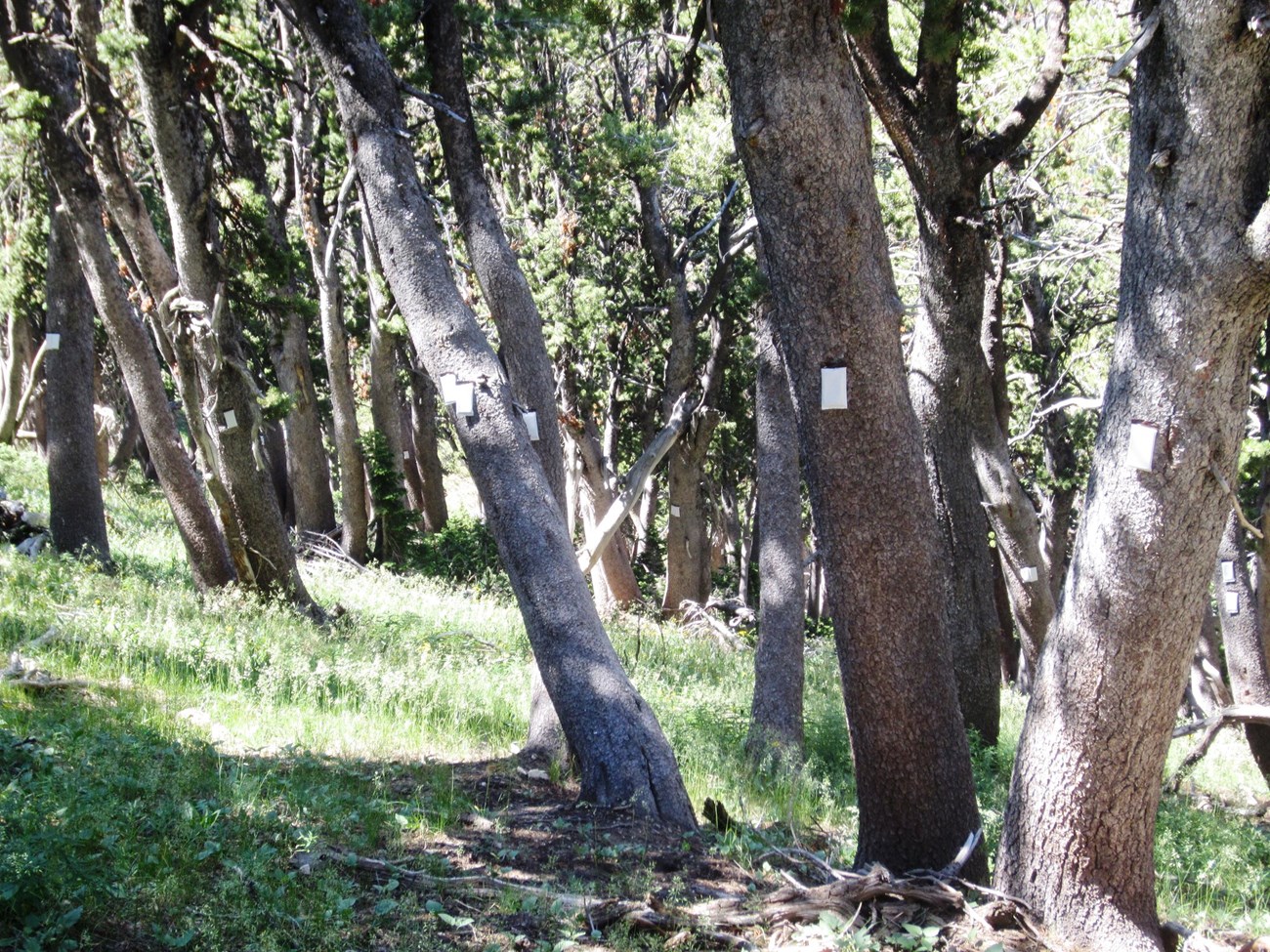
NPS/Bemis All park residents struggle to survive - the immediate needs of food, water, and shelter are found in each inhabitant's community. Predators rely on prey to survive. Prey forage on the park's abundant flora. Various plant species rely on sun, water, and soil nutrients. These processes seem obvious and observable. Some impacts, however, are more difficult to quantify and observe. Disease plays a hidden role in all environments and impacts all species. 
GRTE/Rademaker Blister Rust, Mountain Pine Beetles, and Whitebark PineWhitebark pine (Pinus albicaulis) is a slow growing, long-lived pine with five needles, usually found above 8,000 feet. These pines seem to thrive in high-elevation sites with poorly developed soil, high winds, and extreme temperatures. Their fat and protein-rich nuts provide critical food source for grizzly bears during the fall hyperphagia period. 
GRTE/Adams Chronic Wasting Disease and ElkChronic wasting disease (CWD) is a naturally occurring prion disease of cervids (species in the deer family). The disease attacks the brain causing animals to become emaciated, display abnormal behavior and poor coordination, and eventually die. Since its 1967 discovery in a captive herd of mule deer in Colorado, CWD has increased and spread. CWD is now established in the southeastern portion of Wyoming with scattered pockets found in deer and elk herds closer to the park. 
GRTE/Tobiason Brucellosis and BisonBison (Bison bison), a species native to Jackson Hole, were extirpated from the area by the mid 1800s. In 1948, twenty animals from Yellowstone National Park were introduced to the fenced 1,500-acre Jackson Hole Wildlife Park near Moran. In 1963, after testing positive for brucellosis, all adult bison in the small herd were destroyed while nine vaccinated yearlings and calves remained. |
Last updated: April 30, 2020
